It’s been a long time since we have seen a prime lens from Tamron outside of some very good macro lenses. While Sigma has been making a name for itself with its ART series primes (along with a few innovative zooms), third-party rival Tamron was accomplishing something similar with its pro quality stabilized zooms like the 24-70mm f/2.8 VC, 70-200mm f/2.8 VC, and, most recently, the superlative 15-30mm f/2.8 VC (which has rapidly become one of my favorite lenses, particularly since I got the Fotodiox WonderPana filter system for it). But it’s clear that Tamron was keeping an eye on Sigma’ success with the ART series and has been quietly working behind the scenes to create its own pro-grade prime lenses. This new line of primes has now been unveiled, and I’ve been spending some quality time with the Tamron SP 35mm f/1.8 and Tamron SP 45mm f/1.8 VC lenses over the past few weeks. The 35mm f/1.8 VC and the 45mm f/1.8 VC are only the first in a line of SP (Super Performance) prime lenses.
I spent time with both lenses at the same time, and I must confess that I initially was keyed in more on the 45mm than the 35mm for the simple reason that I already have a 35mm lens that I’m very happy with (the Canon EF 35mm f/2 IS) but don’t currently have an autofocusing 50mm lens in my kit (I’ve got some old manual focus 50s that I’ve got a love affair with). I’ve been reviewing a lot of 50mm lenses in the past year or so and wanted to see how the Tamron stacked up. When I began to give fuller attention to the 35mm I found that in some ways it is the more competent/versatile of the two, and the lens reminded me of just how much I enjoy using the 35mm focal length as a general purpose/walk-around lens. For those of you trying to decide which focal length you prefer, here’s a visual comparison of what the difference between the 35mm and the 45mm Tamrons looks like.
Here are the raw numbers: the Tamron SP 35mm is 479g and 3.2″/81mm long. The Canon EF 35mm f/2 IS is 335g and 2.46″/63mm long. The bigger end of the “under a thousand” autofocus 35mm club is the Sigma ART series. It comes in at 665g and is 3.7″/94mm long. The Tamron has ten elements in 9 groups, including 1 LD (Low Dispersion) element and 2 Aspherical elements. In short, the Tamron is a medium sized lens that is almost perfectly slotted between its two main competitors. But is that the sweet spot? Is the Tamron SP 35mm f/1.8 VC the new lens to beat?
Tamron Technologies
If you are reading both the 35mm and the 45mm reviews, you will find some overlap as they are released simultaneously and I had them both in hand at the same time. The reviews differentiate in a variety of areas to deal with unique qualities of each lens.
One area where Tamron has been on the cutting edge is in the implementation of its image stabilization systems. Tamron’s VC (or Vibration Compensation) systems have consistently been among the industry’s best since their introduction, and they have been the first (and, so far, the only!) lens manufacturer to successfully implement one in a standard wide aperture zoom (the SP 24-70 f/2.8 VC) or wide angle/wide aperture zoom (the SP 15-30 f/2.8 VC). These new prime lenses will be the first with an aperture this wide to receive in lens stabilization. In a Canon system the EF 35mm f/2 IS (an excellent lens that I own) has been Canon’s widest aperture prime to receive image stabilization. Both these new Tamron primes will now become the title holder. The Sigma ART prime lenses have a “sexier” (and larger) f/1.4 aperture, and while Tamron’s VC will allow for lower minimum shutter speeds in some situations (with a static subject), I suspect that some photographers will at least initially view these lenses as being less “pro grade” because of not having an f/1.4 aperture. The actual design and build of these suggest that they are most certainly pro-grade lenses (more so than the ART series, at least in build), but many photographers like the look (or at least the cache) of an f/1.4 lens. Tamron will have to fight a bit of an uphill battle in the “perception war” with Sigma over this.
Tamron’s way of equaling the balance (while undercutting it’s competition in size) is through the inclusion of VC. This is a feature that many photographers will perceive as very valuable, and is a matter of priority for those that shoot video. Tamron’s experience in implementing VC pays off here, as the VC performance here is very good. It is completely unobtrusive, with almost no hints of its operation beyond the steady viewfinder and the nicely stabilized images. High resolution sensors really punish camera shake, so having good stabilization makes a huge difference. The VC is almost silent and does no unseemly jumping when activated. Handholding 1/10th second images is a piece of cake, and slower shutter speeds are possible with good technique and a static subject. This image is .3 second and perfectly sharp:
I have to confess that I find IS/VC must surrender to the law of diminishing returns with wider focal lengths. Telephoto lenses realize huge gains with image stabilization, and its not unusual to be able to handhold 1/10th second shutter speeds with a telephoto. One would think that they would then be handholding 2 and 3 second exposures with a wider lens like this. But I can’t, myself. Not with my Canon, and not with this Tamron. It does make a difference, and handholding .3 or even .5 second shots isn’t a problem, but I rarely can handhold a 1 second exposure. It’s as if the shutter activation itself causes too much movement for these systems to overcome. The greater value here is that you will have a steady viewfinder and be able to handhold very low shutter speeds…and maybe you will do better than I in exploring in the limits of the what the VC on this lens can do. Nonetheless this is a well implemented stabilizer, and it does make a difference.
Sony mounts do not come with VC. I understand the reasons for this, but it does often feel that Sony users get shortchanged with third party stabilized lenses. Sony users are familiar with this pain, however, so this is nothing new.
Another area that Tamron has been developing some valuable expertise is in the development of moisture resistance/weather sealing. They have included this feature on a broader range of lenses than anyone else, and, while there are differing opinions on the value of moisture resistance, it is also a strongly desired feature by many photographers. Photographers with pro grade camera bodies (with weather sealing) want the liberty to match lenses that also have weather sealing so that they can shoot in a broader range of weather conditions. This is one area where Tamron definitely distinguishes itself, as the Sigma ART series 35mm f/1.4 lacks this option. Tamron has gone to a whole new level (for them) with the weather sealing on these lenses, with actual seals at the appropriate places (even the focus ring), a rear gasket, and expensive fluorine coating on the front element. They back up this weather sealing with an industry leading six year warranty (in North America), which suggests they are serious about the build quality of these lenses. And these lenses are beautifully built, with a premium feel that is a real joy to handle and use.
Here’s a video breakdown of the size and build quality of these new lenses:
This lens, along with its 45mm sibling, are among the nicest lenses that I’ve reviewed recently. The build quality is really high grade and is punching WAY above this lens’ price point. This is manifest in a number of ways, including a body that is primarily made of metal (including metal filter threads!!), a metal mount (obviously), and a quality feel to the switches. There is a rubber gasket around the lens mount, and Tamron has also included expensive fluorine coatings on the front elements that further help the moisture resistance and makes lenses both easier to clean and more resistant to scratching. The build here exceeded my expectations, and it is also an area where it really creates some distance between the Canon 35mm f/2 IS. It lacks weather sealing but is also has a more consumer grade build.
The new build design is really quite beautiful. It’s simple and clean, and faintly reminiscent of Sigma’s ART series, although the materials here are actually higher grade. I do find the texture variety on the Sigma ART series a little more appealing, but I do really like this new, clean design. The black is broken up by white lettering (etched rather than printed) here and there along with an “SP” (Super Performance) badge and a light metallic ring near the lens mount that Tamron euphemistically calls “Luminous Gold”. This deviation from the black on black is probably the design aspect that most distinguishes the lens from the ART series, however, and will help Tamron with branding. Several surfaces have a slightly rubberized/soft touch feel that has a tactile pleasing quality. It makes me wonder if Tamron will adopt this new design for future high end zooms, or if this “look” will be reserved for the SP primes.
The focus ring is extremely nice. It is very generously wide and almost perfectly damped. It glides smoothly either in MF mode or in full time manual override, and while the stops at minimum and infinity focus aren’t as definite as a true manual focus lens, they are definite enough that you don’t try to focus past them. There is also sufficient travel (nearly 180 degrees) to accurately focus manually. The focus rings on these lenses are some of best I’ve used outside of dedicated manual focus lenses, and are better than several of those, too. This becomes very important when one considers the amazing minimum focus ability of these lenses. At macro distances most photographers prefer manual focus anyway, and these lenses are joy to use in a pseudo-macro fashion. The lens has focus distance window but no hyperfocal markings (not surprising). Both lenses take a moderate, inexpensive, and easy to find 67mm filter for those nice metal filter threads that is shared with a number of other lenses. Manual focusing with the added bonus of vibration compensation is a treat I’ve rarely been afforded in the past. This is another area where the build really distinguishes it from the Canon 35mm f/2 IS, which certainly improved on the focus ring of its predecessor, but is both much narrower and less smooth in operation than this Tamron.
The build quality here is a new high for Tamron, and belies the moderate price point ($599 USD). The look of the Sigma ART series is still perhaps minutely better, but the build quality of these new Tamron primes exceeds any of the four Sigma ART series lenses I’ve used.
The attention to detail in the fresh design carries over to redesigned front and rear lens caps. The front cap is both chunkier and more contoured than previous Tamron lens caps. It has a more premium feel, which was (I’m sure) the point. As lens caps go it is very nice, and the center pinch portion has a notably precise action that feels better engineered than any previous lens cap I’ve used. The rear cap is also a huge step forward. The previous Tamron rear caps have been on the (ahem) bottom of my list of favorites. I tend to trade them out with Canon caps for the Tamron lenses in my kit while the Tamron caps tend to go to the more lowly vintage lenses in my collection that don’t get used often. Those caps only screw on at distinct points and lack flare. These new caps are another matter. They are contoured, for one, flaring out towards the lens in both a stylish and functional way. They mount easier as well and certainly wouldn’t get demoted in my collection.
Tamron has even redesigned the font for its name in a more serious, contemporary style. These two lenses represent an attempt to move upscale, and my perception is that it is working.
Perhaps to deflect some criticisms over moving some of its manufacturing out of Japan on some of its less premium offerings, these lenses remind us twice that they are both designed and manufactured in Japan (and then again on the hood).
There are two switches on the body with a different look and feel than any other Tamron lens I’ve used. They resemble (wait for it…) the ART series a bit more, save these are a bit wider and flatter. They are the basic switches you would expect, with an AF (Autofocus)/MF (Manual Focus) switch (full time manual override is always available), and the second switch is an ON/OFF for the VC (Vibration Compensation). The switches placement is a little different than usual, with a more side by side look than the typical stacking. There is internal sealing around them to complete the moisture resistance.
Another effective technology that Tamron has recently developed is in its coatings (eBAND and BBAR). This from Tamron’s press release, “eBAND Coating deployed to thoroughly suppress ghosting and flare eBAND (Extended Bandwidth & Angular-Dependency) and BBAR (Broad-Band Anti-Reflection) coatings, both providing outstanding anti-reflection effect, are applied to critical element surfaces for maximum light transmission. Internal reflections from element surfaces which cause ghosting and flare are reduced to an absolute minimum. Flawless, crystal clear images can be obtained. eBAND Coating, a hybrid nano-structured layer with extremely low refractive index coupled with multilayered anti-reflection coating technology, efficiently minimizes reflection of extremely angulated incident light—something that cannot be achieved by conventional anti-reflection coatings alone.”
Techno-speak aside, these coatings provide an almost complete resistance to flare and ghosting. Many prime lenses are susceptible to a variety of flare defects, from veiling to ghosting to a variety of flare related artifacts., but despite thorough torture testing during my time with the lenses I found them extremely resistant to flare. The only time I saw any kind of flare artifact at all was when I had an ND8 filter mounted on the lens and shot into the sun in the middle of day. I still only got the light hazing at the top of this image, and I suspect that it was caused by the filter rather than the lens because I never saw anything similar with the bare lens.
As you read the various reviews as they start to pour in, I think you will find a general consensus that these lenses are seriously well made pieces of kit. Tamron’s six year North American warranty is another huge advantage for shoppers in that market, and the European warranty is five years, which still eclipses the competition by a wide margin.
My only indictment on the build/packaging is that while Tamron includes a lens hood, they don’t include any kind of protective case – a Sigma strength.
But Are They Super Performance?
Watch the video here to see me break down Tamron’s various claims about the “Super Performance” of these lenses.
I’m happy to announce that yes, the Tamron SP 35mm f/1.8 VC is a super performing lens in most regards. In some ways it is a more well rounded lens that its big brother (45mm), and I was seriously impressed by the images I saw out of the camera.
I’ve long been impressed with the great sharpness from Canon 35mm f/2 IS wide open. I mostly shoot it that way, as the 35mm focal length presents a fair amount of depth of field at portrait distances even at f/2. At 10 feet the depth of field at f/2 is right over 3 feet; plenty of depth of field to even shoot a small group if they are positioned roughly on the same focal plane. I only stop it down when I want more DOF for landscapes. Sigma’s 35mm f/1.4 ART is even a bit sharper, so the standard is set high. I don’t think that anyone is going to be disappointed with the wide open resolution from the 35mm lens, however. I looked at image after image at a pixel level and was consistently impressed.
Sharpness is strong across the image frame from wide open. I don’t see the biting resolution/contrast of the Otus series (not surprising), but even wide open landscape shots show high resolution across the frame without any hint of that haziness/indistinct edges that softer lenses will show. This is great news for the times when you are shooting in lowering lighting conditions and want to keep the ISO setting down. The lens also exhibits a nicely flat focal plane. I haven’t found a situation where I would hesitate to use the lens wide open. I’ll leave the chart testing to those that excel at it, but I suspect that one would be hard pressed to realistically tell a difference from the Sigma 35mm ART even if there is one. Stopping down to more typical landscape apertures produces biting sharpness across the frame. I’m always happy when I zoom in to images at a pixel level and discover that images look even better then. Here is a series of images and crops that have certainly been impressive.
I’ve previously mentioned the excellent flare resistance. This is important in a wider prime lens, as the circumstances when the sun will be in the frame are more frequent. With a telephoto you typically have to purposefully put the sun there, but that’s not always the case with a 35mm focal length. The lens passes this test with flying colors, with no apparent hazing, ghosting, or flare artifacts that I’ve seen. These lenses perform more strongly in this aspect than any ART series lens that I’ve used, though the Sigmas are far from poor in this regard. This is also an area of strength for my Canon 35mm f/2 IS, and as a portrait photographer I’ve frequently used backlighting in shots because I don’t fear the image being affected by flare/haze. One could definitely do the same with this Tamron.
Bokeh quality is very nice from the rounded nine bladed aperture iris. I’ve not seen anything jittery or objectionable, and the lens actually does a better job of retaining circular highlights towards the edges of the frame than the 45mm. Where the 45mm (and the Canon 35mm) surpasses it is in “busyness” of bright circular highlights. In the 35mm they exhibit a fair bit of what is often called “onion bokeh”, although I only saw this with my Christmas light test. This shows the bokeh quality at f/1.8, f/2, f/2.8, and f/4. Bokeh highlights stay rounded even beyond, but I only shot this series through f/4.
The Canon series below shows that it has less “activity” with the bokeh highlights (and it is the top performer in this regard among 35mm lenses). The Canon shows a similar series without the f/1.8 shot (for obvious reasons).
Finally, just to give you a quick visual comparison, here are the two lenses side by side at f/2:
In field use I didn’t notice any of that busyness, and actually felt the lens handled the transition zone (medium distance bokeh) quite well. That is the area where some lenses really fall apart, and produce hard edged bokeh that is eye catching in a bad kind of way. Still, if you have bright bokeh highlights in the image you may see some concentric circles (onion effect) in the bokeh. I’ve found that using a brush in Lightroom that reduces clarity does wonders if this is an issue for you. One advantage for the Tamron shows up in this test, however, and that is in the overall roundness of the bokeh circles, which are rounder than the Canon’s throughout the frame. Where the Tamron excels is in its ability to produce bokeh/defocus. It can get so close to subjects that it can really, really throw backgrounds out of focus, and there are myriad ways to utilize such an ability.
The combination of nice optics and strong bokeh performance means that this is a lens capable of producing a lot of beautiful images! The ability to focus down so much closer than other 35mm lenses by a wide margin (more on that in a moment) opens up all kinds of new possibilities. On the other end of the aperture spectrum, stopping down the nine bladed aperture produces some delightful sunstars/sunbursts that add a lot to an image.
Vignette control is also a strength. There is a negligible amount of vignette visible in the corners at wide open apertures, but far less than competing primes. This is an area of weakness for the Canon 35mm f/2 IS (nearly three stops of vignette in the corners), but the Tamron also improves on the Sigma’s performance in this area as well. Take a look at the comparison between the Tamron and Canon here:
The use of a slim circular polarizer did not add any obvious vignette. In most situations there isn’t enough vignetting to even be noticeable. In field use I haven’t noticed enough vignette from the lens that I would feel the need to correct anything. This, combined with low native distortion (a tiny amount of barrel distortion), means that those of you concerned about not having a lens profile in camera to correct for these things shouldn’t have much to worry about.
Color rendition seems very good overall. Colors are natural and rich. You can judge for yourself by checking out the Lens Image Gallery.
The 45mm VC struggles a bit with chromatic aberration control, but the 35mm does a better job overall. They do exist, but you will only see them in extreme situations. Here is an example from a very high contrast target – the white lettering on the Tamron cap. They aren’t noticeable on the full size image, but a 100% crop will show that there is purple fringing beyond the plane of focus and light green fringing beyond. I’ve thrown in a second crop where I brightened the subject to bring out the purple fringing, but it really isn’t bad.
There isn’t enough to be objectionable, however, and I think the situations where this will be an issue for you are few and far between. They are much more pronounced on the 45mm, unfortunately.
Overall the optical strengths of the lens far outweigh the very minor negatives. I’m always happy when Roger Cicala from LensRentals weighs in on any lens. He has the unique opportunity to test large batches of lenses (unlike most of we reviewers) and can thus spot trends like sample variation. He tested the two new Tamron primes on the optical bench and found that A) they resolved very highly and B) the sample variation result was excellent on the 35mm and exceptional on the 45. That’s an encouraging report, and you can check it out here if you would like.
Close Encounters of the Magnification Kind
I’ve saved one of the best features of the lens until last. When I first saw the press release for the 35mm, I have to confess I completely missed just how good the Tamron SP 35mm f/1.8 VC’s maximum magnification figure was. I saw 1:2.5 and read .25x, which seemed to make sense, as the Canon 35mm f/2 IS had the peak figure I was previously aware of at .24x. Tamron claimed a class leading performance, and so a .25x figure was class leading, if only by a small margin (but isn’t that the nature of marketing?). But a kind viewer on my YouTube channel set me straight. I was misreading the figure; the value was 1:2.5, equaling a .40x magnification. This blew me away, as it is (I believe) the highest figure I’ve personally seen from a non-macro lens. It isn’t far behind the .50x figure offered up by the Zeiss Makro Planar T* 2/50mm that I reviewed late last year. I can’t even begin to tell you how useful such magnification is. Tamron accomplishes this through the use of a floating element (Tamron calls it their “Floating System”). They’ve done a fabulous job of its implementation, and it enables the 35mm to focus down to a miserly 20cm (under 8 inches). Remember that this figure is from the sensor, so once you remove the 3.2″ of the lens (and another 2″ of hood if you have it mounted), it means you can pretty much get on top of your subject and still focus. To get this picture, for example:
I was set up this close to the subject. (Forgive the distinctly not glamorous iPhone picture).
The challenge then is to not shade your subject with the lens itself. It will probably help to remove the lens hood when you want to shoot at such close focus. Here is the difference between the previous record holder (the Canon) and the new record holder (Tamron) when it comes to close focus for a 35mm lens:
This is enough magnification to treat the lens essentially like a macro lens in a lot of situations, and the use of an extension tube would add even more magnification (though getting you ever closer to your subject). I like the working distance of the 45mm a bit more, but its magnification (.29x+), though also class leading, is behind this lens by a fair margin. If you don’t have a dedicated macro lens this will probably be a reasonable replacement until you get one. The resolution at minimum focus is still very high, and the fairly flat plane of focus from the lens makes it useful. Here are a few close focus examples (the one with the red lights is actually the tip of an iOS Lightning cable!)
This is one of the features that I’m most excited by because it fits my own shooting style so well.
AF Performance
This is an area where these lenses really need to distinguish themselves. I own the Canon EF 35mm f/2 IS, and it is a focusing standout. It’s fast, but more importantly, it is exceptionally accurate. My images from it are always well focused, so its a lens I will frequently use for professional work – from portraits to reportage. I can trust it. I won’t own a lens that I cannot trust to consistently and accurately autofocus.
The Achille’s heel for the Sigma ART series in my experience (and that of many other photographers – particularly other Canon shooters) has been sometimes inconsistent autofocus accuracy. Both Tamron and Sigma are forced to reverse engineer Canon, Nikon, and Sony’s autofocus algorithms because these companies will not license their technology to them. My experience says that Tamron has been able to more effectively accomplish this, and I get very consistent results from some of the professional grade zooms from Tamron. I use them almost exclusively for my event and wedding work and typically don’t have to discard one image out of a thousand for missed focus. Large aperture primes are very demanding for autofocus, so this is a key point for Tamron if it wants to convince photographers to choose its lenses over first party choices.
Things got off to a good start when I performed calibration. The Tamron 35mm needed a -2 adjustment; a value that was highly repeatable. I prefer small adjustments as a matter of principle; it means that those without the ability to perform microadjustment in their camera bodies can still expect reliable performance out of the box. Autofocus performance would have been good without any adjustment, but that bit of microadjustment produces slightly more repeatable autofocus accuracy. The one advantage that Sigma has to offset its autofocus issues is the ability to tune focus through the Sigma USB dock. Some report that this makes a huge difference; others report that autofocus inconsistencies remain for them even after tuning via the dock. This Tamron lens doesn’t have the dock, but fortunately what it does have is highly accurate autofocus.
The autofocus motor in the lenses is Tamron’s USD (Ultrasonic Drive). This is a true ring type AF motor similar to Canon’s USM. The AF feels a bit more snappy in the 35mm than the 45mm. The 35mm is roughly similar in speed to my Canon 35mm f/2 IS in most situations (which is to say very good!), although I would still give the Canon the slight nod. This slight advantage doesn’t manifest itself in normal use, but will show up in low contrast/dim situations. The Tamron is more prone to hunt for a second before locking focus while the Canon is more likely to grab focus rather than hunting. I never had a situation where the Tamron didn’t focus, but I did feel that the Canon remained the more confident focusing lens. It has, in fact, been one of the best focusing lenses in my kit, both equaling and surpassing some of its more expensive L series brethren. The fact that I didn’t see a major difference between it and the Tamron is a high endorsement of the focus quality of the Tamron.
I was consistently delighted when I zoomed in 100% on images and saw amazingly good focus and fantastic sharpness. I hate seeing images fall apart at a pixel level due to missed focus, so I guess I must confess to being a pixel peeper. The accuracy and sharpness here more than passed my expectations.
Portrait notes: Some of you that have read my reviews in the past know that I like to try wide aperture lenses out in a portrait environment. Environmental portraiture is typically very demanding on an AF system because you are shooting at wide apertures and looking for pin point focus on eyes. This is where the focus inconsistencies of many lenses are exposed. I went out today to shoot a portrait session. The weather was not particularly cooperative; it was a very, very bright and my open window for shooting was not the best. But, I was on a deadline with these lenses, and I thought, “Why not a torture test?” I shot almost every portrait shot wide open (f/1.8), except for three frames I dialed down to f/2.2.
I took a few tools to help combat the light. I used the Lite Genius Lite-Scoop II flash modifier I reviewed a few months back for my Metz 64 AF-1 flash unit. I prefer to shoot with my flashes off camera, but did not have time nor the inclination for a complicated light setup. The flash was on the camera with the modifier in place. I also took along an ND8 filter that I happened to have in the appropriate 67mm size so that I could bring the shutter speed down in certain situations. I also went with Manual HSS mode and shot with really high shutter speeds in other situations to just overpower the ambient light. The Metz has a lot of power and enables me to do this in most circumstances. I went through the roughly 100 shots from the session at a pixel level and found that my focus consistency was very good despite the challenging conditions. I slightly prefer the 35mm’s focus speed and accuracy, but the 45mm was rock solid as well (the 35mm may be a bit sharper).
There are a number of portrait shots in the gallery above. These were all shot at f/1.8. They will also give you a chance to evaluate bokeh and color in an environmental portrait environment. These are not conditions that I would normally like to shoot portraits in, but the lenses themselves worked very well. The Tamron SP 35mm f/1.8 VC will be a solid tool in a portrait or wedding photographer’s arsenal.
Manual focus is exceptional for an autofocus lens due to the combination of the nice focus ring I mentioned previously along with the rock solid VC. I don’t usually have the luxury of an image stabilizer when I manually focus, so it makes manual focus a kinder experience than on most AF lenses. Videographers will appreciate this along with a full 180 degrees of focus throw.
EOS M3 notes. While these lenses are on the larger side of what I would deem natural for my smaller EOS M3 mirrorless body, the focal lengths are appealing crossover ones. The improved grip on the M3 means that slightly heavier lenses (for mirrorless) like this one still work fairly well. This lens provides a 56mm equivalent on a crop sensor, which makes this lens perhaps the nicest 50mm equivalent lens currently available (though I’m looking forward to using the manual focus only 50mm f/1.2 coming from Rokinon). I was happy to find that the lenses focused nearly as quickly and accurately as native M mount lenses in one shot mode, although video AF Servo shooting can be a bit slow when making major transitions. Images produced with the combination are very appealing. It’s ironic that many recent Tamron lenses behave more mannerly via the EF adapter than most of the Canon lenses. Something about the way they achieve focus seems to agree with the M3. Here are a few M3/35mm combo samples.
How about Canon’s DPAF? A few readers were interested in how these lenses would work with Canon’s DPAF. I have a Canon 70D body, the first to use DPAF, and one of the few DSLRs to have quality servo AF during video recording. The lenses that work best with DPAF for video are those with stepping motors like Canon’s STM, but I’m happy to report that while these lens don’t focus quite as quickly as STM motors (and are bit louder in doing it), they focus smoothly and accurately. If you are using something else to record your audio I don’t see an issue. Here’s a little sampling of videos using DPAF.
DPAF works well for stills, too, though not as fast as typical contrast AF. The 35mm is also a very, very nice lens mounted on a crop body like my 70D (and gives a nice weather sealed combo for general shooting or portraiture). By the way, using the lens on a crop sensor body gives you a little more working distance when shooting near minimum focus, and this lens is definitely better optically than the crop sensor specific Sigma 30mm (not 35mm) f/1.4 ART. This is definitely a lens you should consider if you shoot a crop sensor body and even remotely think you might move to a full frame body in the future (or even if you don’t plan to make that move). Here are a couple of samples taken with the 70D + 35mm VC.
Conclusions
I’ve already been asked the question I knew was coming several times. Many people know I use the Canon 35mm f/2 IS or have watched/read my review of it. So, “Which one would you choose?” was inevitable. It’s a tough question, as there is some give or take. I already own the Canon and am happy with it, so for now I am keeping it. But what if I were starting fresh and trying to choose between them? I honestly don’t know. I like the compact size of the Canon, I like its image quality, and I’ve found it to be superbly focusing instrument. But the Tamron is built better, has a wider aperture, also has an image stabilizer, has a much higher magnification figure, and much lower vignette. You see why it is a hard choice! I probably would choose the Tamron for the pro-grade build and wider aperture, and I love the magnification figure, but having owned the Canon I would also want to test them side by side for an extended period before making a final decision. So yes, I am a waffler…
It was the 45mm lens (read my review here) that most excited me and initially captured my attention, but when I turned my attention to this Tamron SP 35mm f/1.8 VC I found one fantastic lens. Using this lens reminded me of how much I enjoy the 35mm focal length, and the extreme flexibility of this instrument was a real joy to use in unleashing my creativity. In the US market it is priced equally with the Canon 35mm f/2 IS (still a very valid option!) at $599. This undercuts the Sigma 35mm f/1.4 ART by a fairly wide margin of $300 (the Sigma is currently $899). In the US market this makes the Tamron an extremely compelling option on price, but some other markets are currently showing a much less definitive price advantage for the Tamron. Price aside, however, this is certainly a lens that can compete on merit. Tamron came out swinging for the fences with these lenses, and the Tamron has a lot of strengths to offset its slightly slower aperture when compared to the Sigma. Its amazing close focus capability, exceptional build, image stabilizer, and great optics overshadow the occasionally busy bokeh highlights and slight bit of chromatic aberrations. The good news for consumers is that we now have three compelling options in the “affordable” 35mm category, and frankly there isn’t a bad choice in the bunch. I look forward to seeing more of the SP primes from Tamron in the future.
Pros:
- Exceptional build quality
- High grade weather sealing
- Fluorine coating
- Bar raising .40x maximum magnification
- Excellent manual focus ring with good focus throw
- Excellent resolution from wide open on
- Extremely low vignetting
- Quality bokeh from nine blade aperture
- Well performing VC system
- Fast and accurate autofocus
- Excellent price to build/performance
Cons:
- Somewhat busy bokeh highlights (onion bokeh)
- Chromatic aberrations not perfectly controlled
- Autofocus isn’t quite as confident as the Canon
- No case included
A big “thank you!” to Canada’s Amplis Foto for providing these retail samples for review. I’ve bought many lenses and accessories from Amplis myself, and they are great to deal with! You can use the Coupon Code AMPLIS52014 to get 5% anything in their store, including these new lenses!
Gear Used:
Canon EOS 6D DSLR Camera (Body Only)
Tamron SP 35mm f/1.8 Di VC USD
Tamron SP 35mm f/1.8 Di VC USD (USA and World)
Adobe Lightroom CC Software for Mac and Windows (Boxed Version)
Adobe Photoshop Creative Cloud 1-Year Subscription
Alien Skin Exposure 7 (Use Code “dustinabbott” to get 10% anything and everything)
Purchasing your gear through B&H and these links helps fund this website and keeps the articles coming. Thank you for your support.
Great News! I can now offer a 5% discount on all purchases at Amplis Foto, Canada’s Leading Photographic Supplier. Please enter discount code: AMPLIS52014 in your cart. It is good for everything in your cart, and is stackable with other coupons, too! It will take 5% off your entire order! Proceeds go towards keeping this site going and providing you with new reviews!





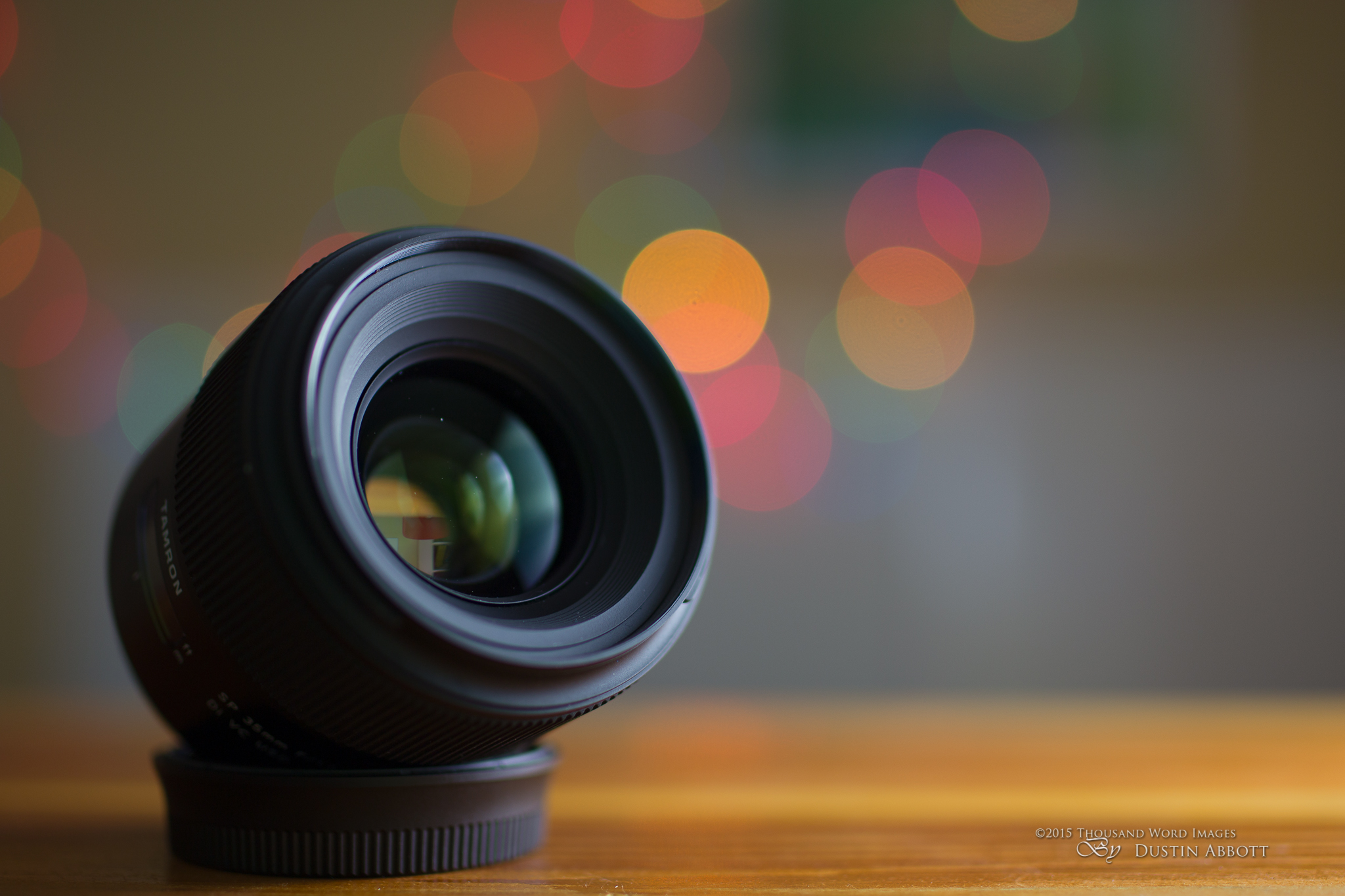
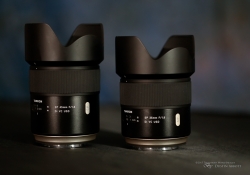
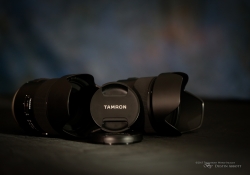
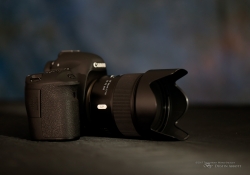
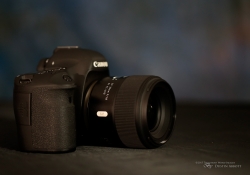

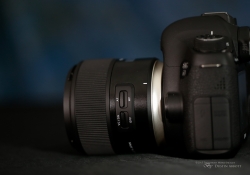
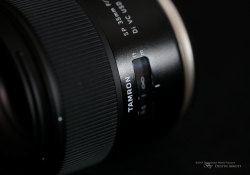
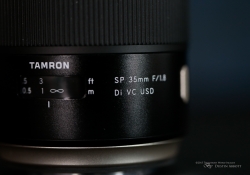
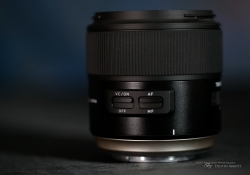
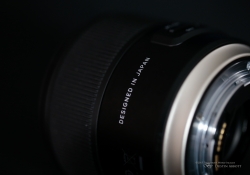
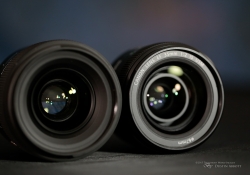
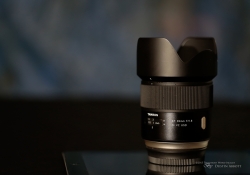
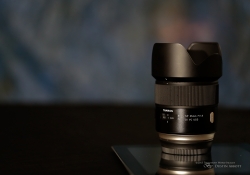
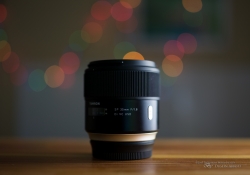
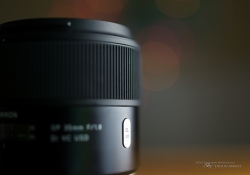
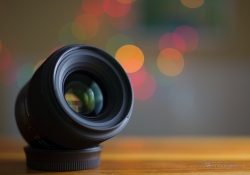
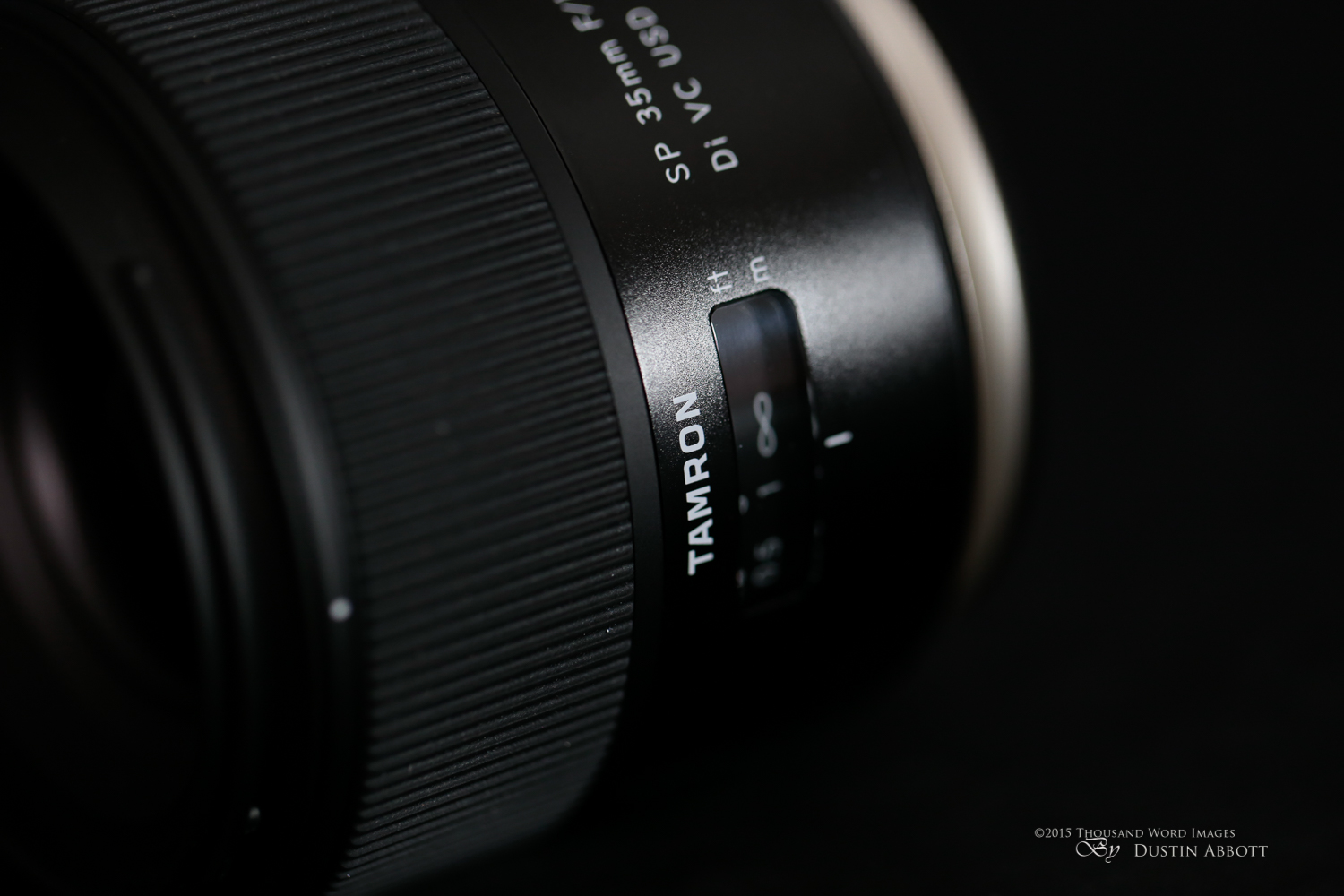
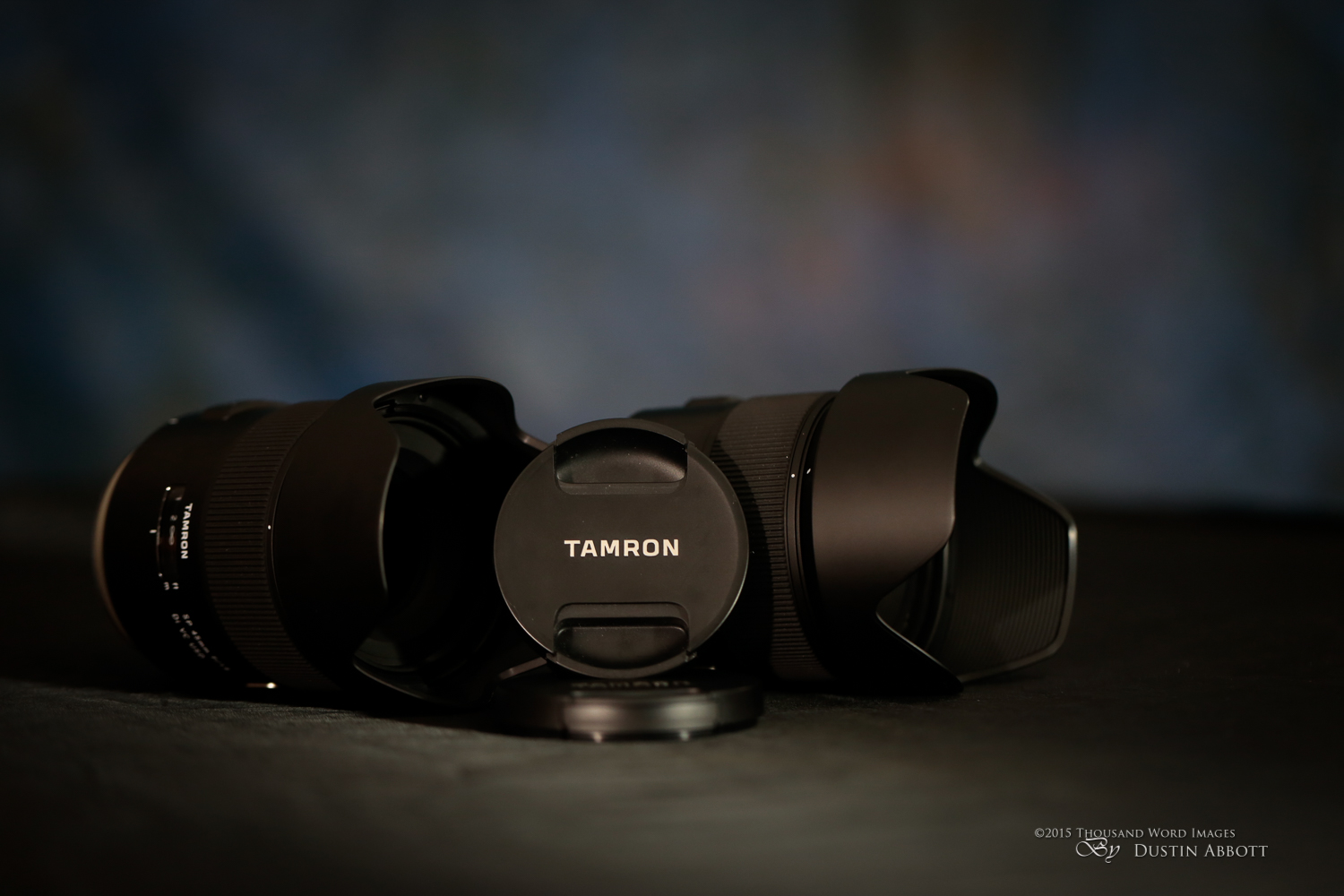

















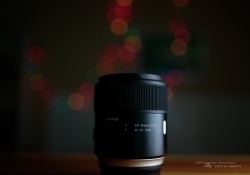
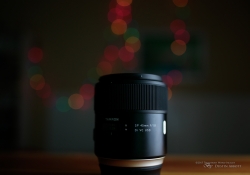

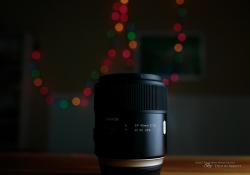
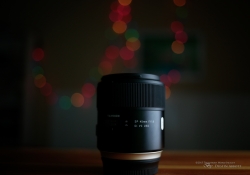
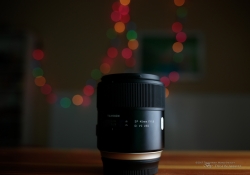
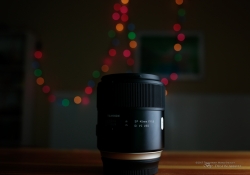




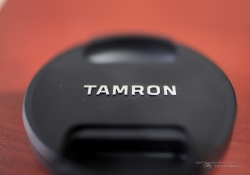
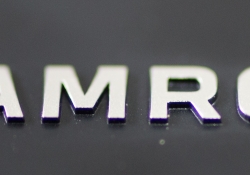
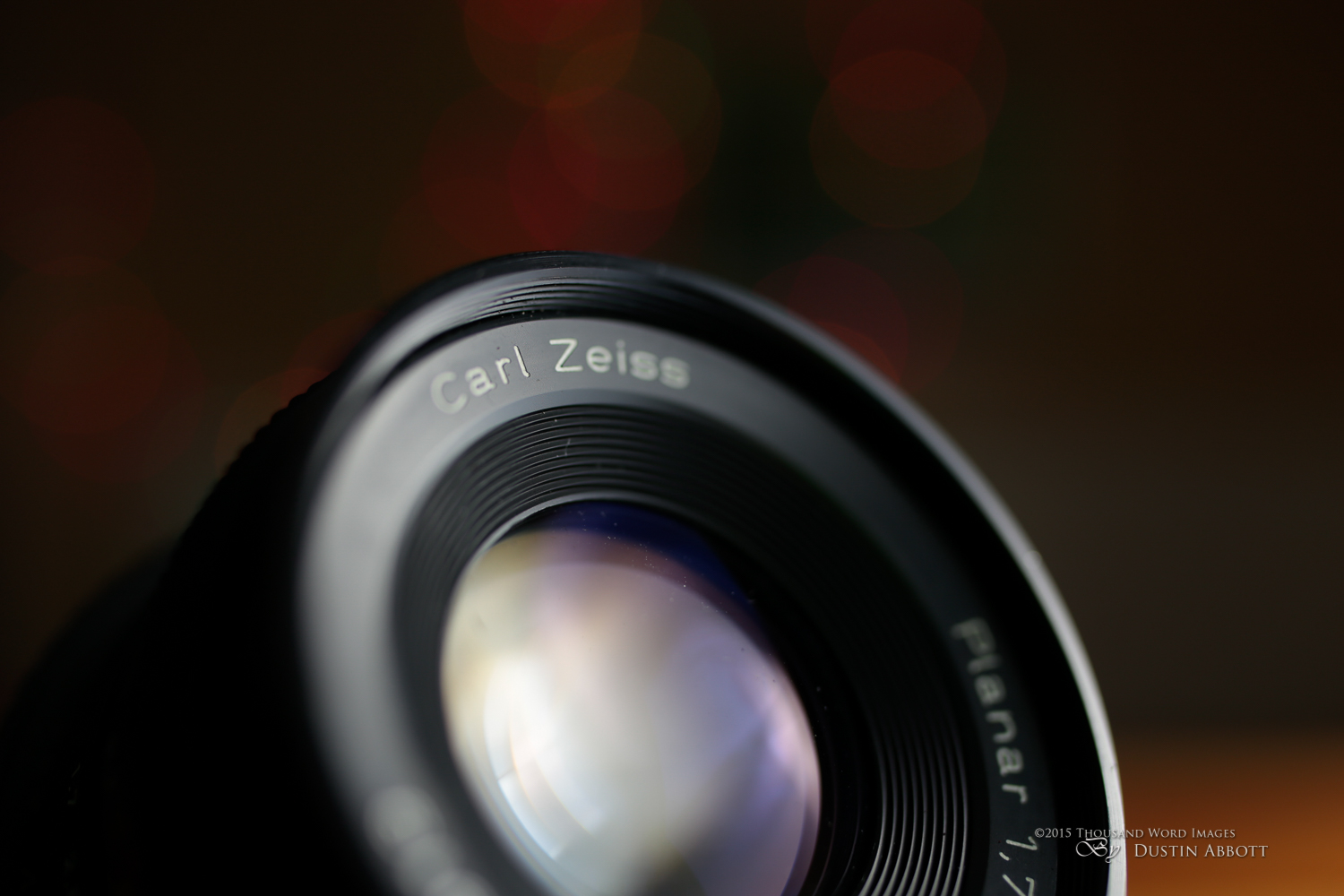
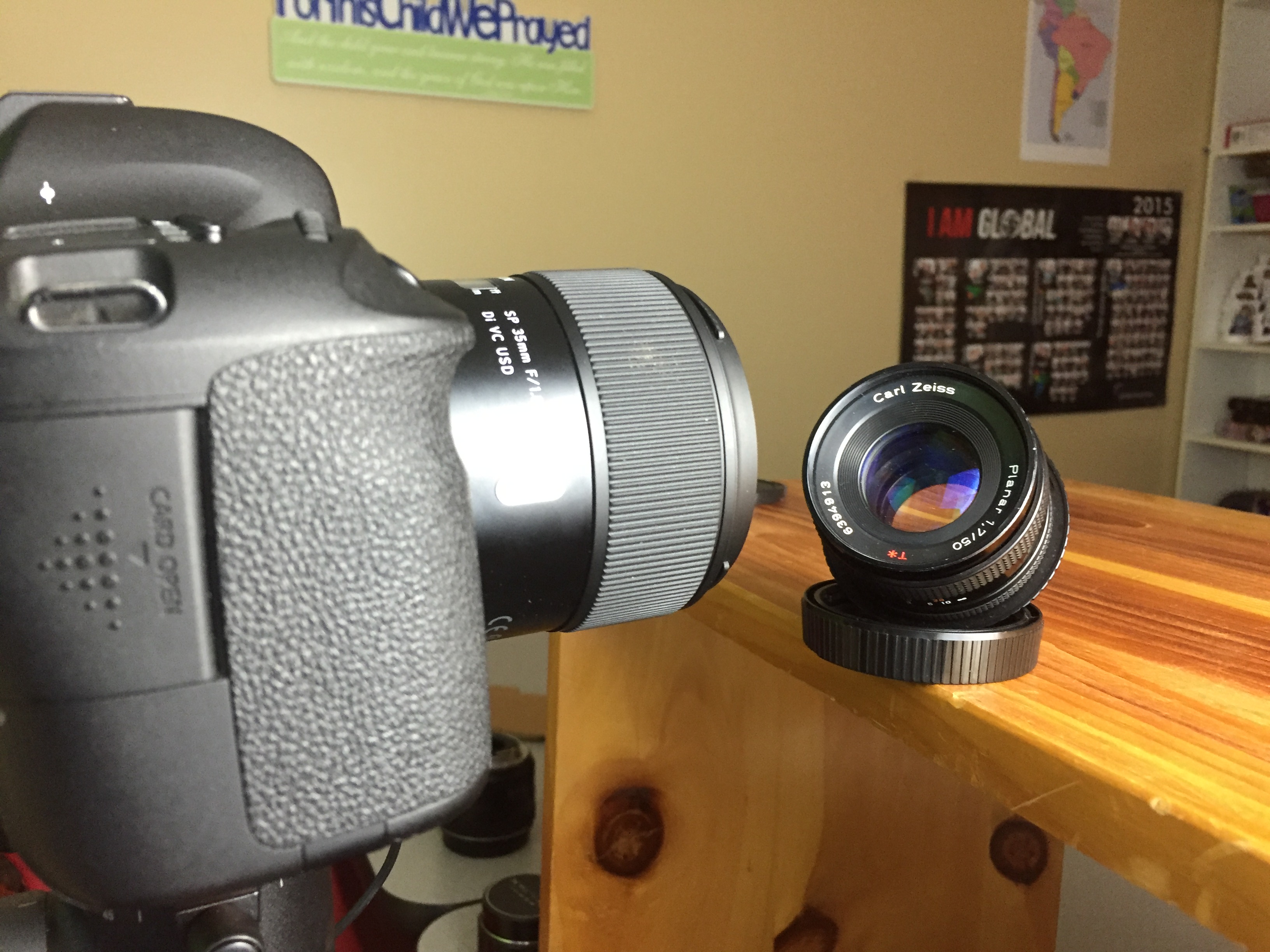




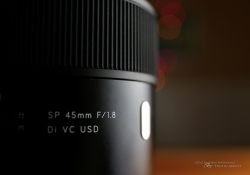












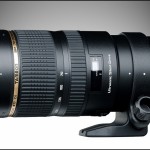
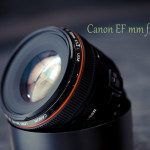
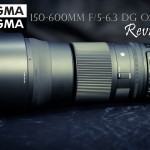



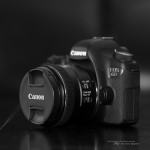
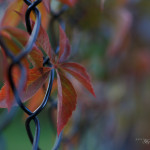

I noted you are testing these new lenses using the Canon 6D, I belief these new lenses are design for high megapixel camera like the Canon 5Dsr with a smaller pixel pitch of less than 4.5 macron. It would be nice if your test are carried out using the 50.6mp or 42mp camera to see the sharpness and macro contrast in relation to 4.5 macron pixel pitch sensors.
I have been shooting with the Canon 5Dsr and till todate I have not experience moire’ with my present line of Classic Zeiss lenses. The worse I have seen is the Zeiss Distagon 35mm f2.0 lens performing on the Canon 5Dsr.
It’s funny how a new body is released and many people suddenly think tests done on any other body are somehow less valid. I may use a 5DsR in the future, but I also believe that the same standard I have applied to dozens of previous reviews gives a strong, fair representation of the lenses I review. The number of people who shoot at 50.6 or 42mp is a very, very small sample size in the market right now.
Excellent review, thank you. I bought a Canon 35mm f2 IS recently and was amazed by its performance (and I have owned and used a lot of great lenses). The IS is incredible allowing me a 30-40% success rate for tack sharp frames at… one second. I wonder how the Tamron’s VC compares? Its great to see Tamron offering us another alternative to either Sigma or Canon, but I can’t help but feel that Canon got the 35mm IS so right that its a tough act to follow. Like you said, its not all that heavy or large, IQ is amazing, AF is spot on and price is good. Personally, I have found Canon is producing amazing lenses at the moment and the competition really needs to add something special to displace them from my kit bag. I’m not sure the Tamron quite manages to differentiate itself for practical shooters, because unlike the Sigma ART, f1.8 vs. f2 is not worth worrying about really. For those who want more solid build (we do not know about the inside, only the outside) and weather sealing, the Tamron looks great.
I won’t argue with your thoughts on the Canon – I love it! I do think that the Tamron has some very serious upsides, though, including that incredible magnification and true weather sealing (it does have internal sealing at the ring, switches, etc… plus the fluorine coating on the front element).
Thanks, awesome review!
Dustin,
Excellent review.
Do you think the Tamron 35 is a reasonable alternative to double as a normal use lens and also be good for astrophotography?
Another site did a coma review and found that while f/1.8 coma wasn’t that great it was completely cleared up by f/2.5.
The same site shows the Canon 35 f/2’s coma is not very good even at f/2.8 and at that aperture is almost as bad as the Tamron wide open.
I understand the Sigma 35 is the sub $1,000 35mm coma king, but I’m scared off a bit by erratic autofocus reports.
Regards
Dave
Dave, I do think this should be a solid choice for astro, and the build quality means that it will be performing well for you for many years to come.
Always a pleasure to read your reviews, Dustin. Thank you.
Just one question. I would be much interested on 24mm and 85mm primes for general low-light and portrait photography, respectively, on my crop body. No news from Canon about a 85mm f/? IS and the 24mm IS is seems to be good but “just” f/2.8 (what makes me consider also the 35mm f/2 IS but think would give me a too closed FoV for my taste). So, do you think we could see a 24mm and/or 85mm f/1.8 – 2 VC from Tamron in the close future?
Thank you.
Best regards,
Rubén
Ruben, I have no guarantees on those lenses, but I do know that Tamron has more primes planned for the season, and both of those are pretty common focal lengths. I’m personally hoping for the 85mm, myself.
Great review Dustin! I just bought this lens and I shoot with a 6D as well. I love the colors it produces and the bokeh is of L quality. I agree about the autofocus being very slow. The lens hunts a bit even under some shade unlike my canon 24-70 2.8 v.1. For me (a hobbyist) this isn’t a dealbreaker but may pose as a problem for professionals.
Alberto, I didn’t really find the AF slow on the 35 overall, but I did note that it was more likely to hunt a bit than the Canon 35 IS. The Tamrons have a much longer focus throw than the competitors (particularly the Sigmas), which has the pro of more accurate focus (and makes them great to MF), but the tradeoff is a bit slower AF.
Hey Mr Abbott
Great review! I know you briefly mentioned the Sigma 30mm f1.4 art. Can you go into detail about the differences? I’m able to find the sigma 30mm 1.4 art for about 2/3 of the price of this tamron, and obviously differences like stabilization vs f1.4.
Any thoughts on chromatic aberration, af performance and accuracy, sharpness, and colors between the two?
Thank You! Keep up the great work!
Ramen, I personally think the Tamron is worth the extra money. Better build, better sharpness, better AF, much better magnification. That’s what I’d go for.
thank you for helping with my decision
I really enjoy the close up / magnification as well
Will be using this on my 80D!
Hi Dustin,
Thanks for the review. I’ve used this lens on 80D and love the pictures taken with this lens.
However if I use the ‘right outermost’ AF Point on 80D to focus, it missed the focus by a lot. Combined with F1.8 for object within 3 meters away, all I’ve got is bokeh.
Cetre AF is just fine.
Just wondering if the same thing happened to others too?
That wasn’t my experience at all. It seems odd that you would have such a variance from center point to outer focus point. What’s your result when using Live View? Do you get consistent focus at outer parts of the frame then?
I dont remember testing it, but my lens and camera are with Tamron for firmware update and calibration. Just hopefully firmware update improve the AF, or else I might need to get a replacement 🙂
Just as reference, outer AF with Canon lenses are working fine.
Best of luck to you. You’ve done the right thing by sending everything in for inspection/calibration